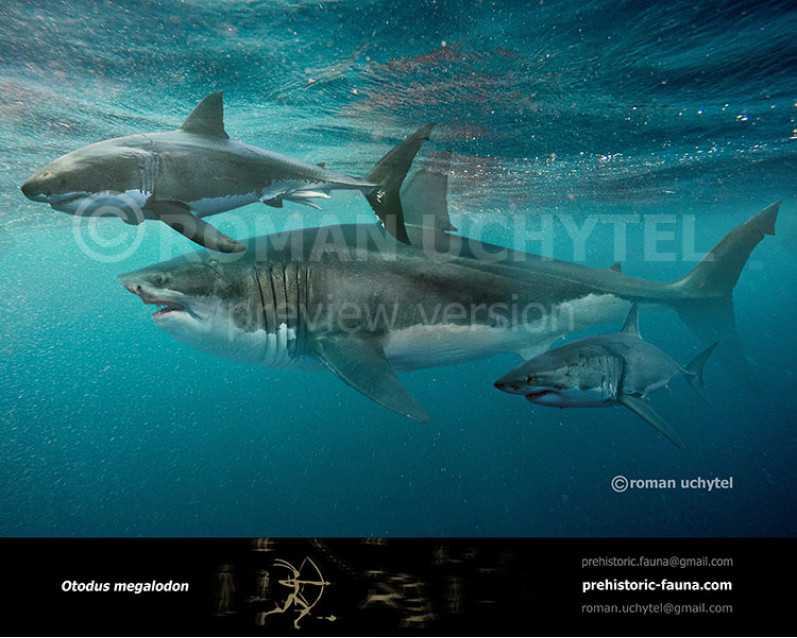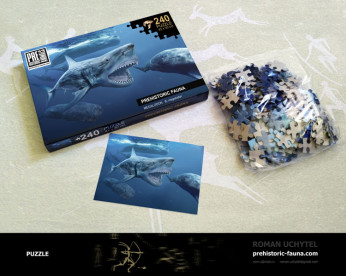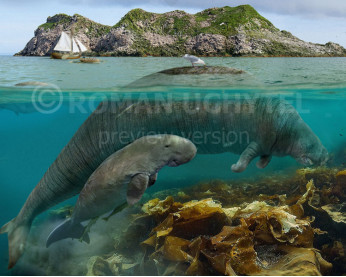Megalodon
259259Megalodon (†Otodus megalodon ( Agassiz, 1843))
Class: Chondrichthyes
Subclass: Elasmobranchii
Superorder: Selachimorpha
Order: Lamniformes
Family: †Otodontidae
Temporal range: lived approximately 15.9 to 2.6 million years ago, during the Cenozoic Era (middle Miocene to end of Pleistocene?)
Dimensions: maximum length - 13-18 m, weight - 47 000 kg
The Megalodon (Ancient Greek for “big tooth”) is a huge ancient shark that appeared about 28 million years ago. This predator, up to 18 meters in length, became a real lord of the oceans in the middle Miocene era - about 15.9 million years ago. Its massive jaws with 10-centimeter teeth could overpower the huge whales that it hunted.
In appearance, the Megalodon resembled a great white shark but 3 times longer and much heavier. As sharks have cartilaginous skeletons, to date no well-preserved remains of this fish have been found. However, a great number of Megalodon teeth have been found, that have helped to determine its size. It is thought that O. Megalodon became extinct at the end of the Pliocene era about 2.6 million years ago, but there exist eyewitness accounts and discoveries of “fresh” huge teeth, which refute this contention. Can this gigantic shark be hiding in the depths of the modern ocean?
We’d like to believe that it is so…
Megalodon (†Otodus megalodon ( Agassiz, 1843))
Class: Chondrichthyes
Subclass: Elasmobranchii
Superorder: Selachimorpha
Order: Lamniformes
Family: †Otodontidae
Temporal range: lived approximately 15.9 to 2.6 million years ago, during the Cenozoic Era (middle Miocene to end of Pleistocene?)
Dimensions: maximum length - 13-18 m, weight - 47 000 kg
The Megalodon (Ancient Greek for “big tooth”) is a huge ancient shark that appeared about 28 million years ago. This predator, up to 18 meters in length, became a real lord of the oceans in the middle Miocene era - about 15.9 million years ago. Its massive jaws with 10-centimeter teeth could overpower the huge whales that it hunted.
In appearance, the Megalodon resembled a great white shark but 3 times longer and much heavier. As sharks have cartilaginous skeletons, to date no well-preserved remains of this fish have been found. However, a great number of Megalodon teeth have been found, that have helped to determine its size. It is thought that O. Megalodon became extinct at the end of the Pliocene era about 2.6 million years ago, but there exist eyewitness accounts and discoveries of “fresh” huge teeth, which refute this contention. Can this gigantic shark be hiding in the depths of the modern ocean?
We’d like to believe that it is so…


-1-797x638.jpg)
-megalodon-797x638.jpg)
-797x638.jpg)

-1-70x56.jpg)
-megalodon-70x56.jpg)
-70x56.jpg)

